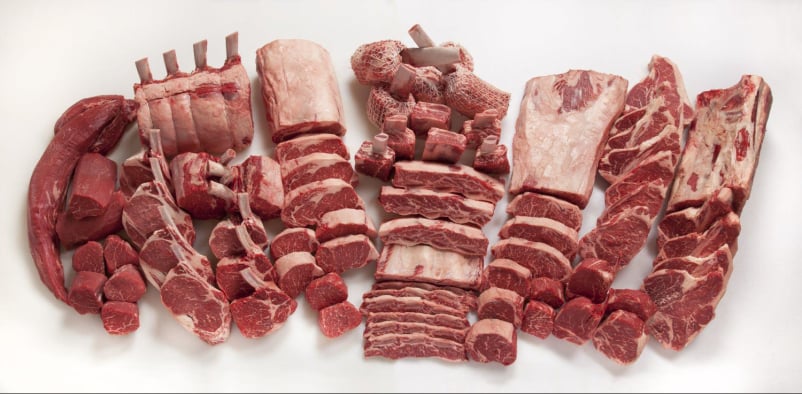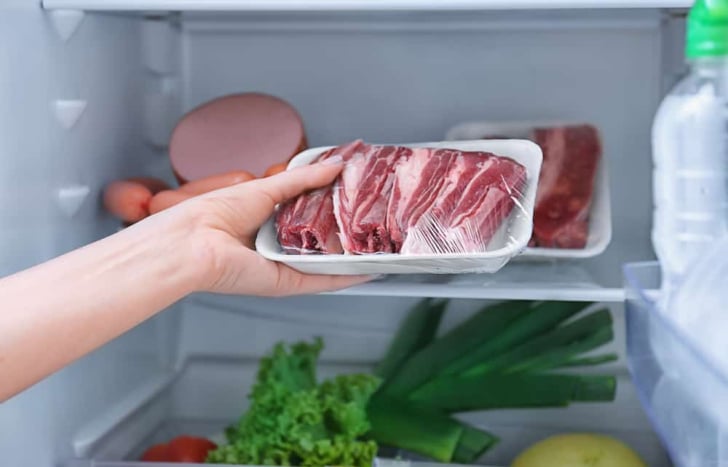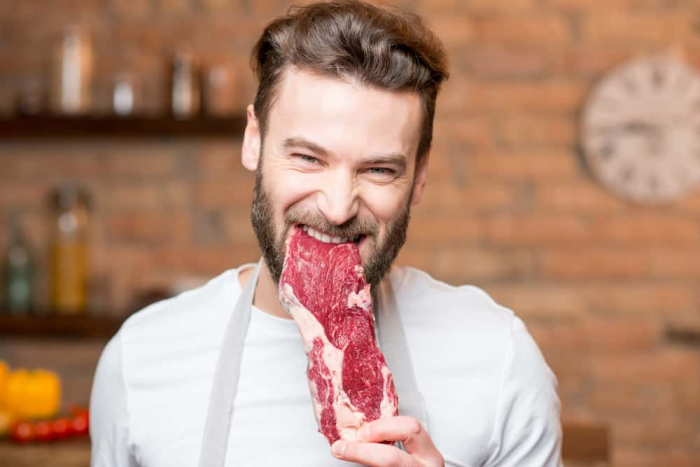Fresh Beef Must Have These 5 Criteria To Be Safe For Consumption
Meat cow is one source of highly nutritious food. However, meat is easily overgrown with bacteria or fungus, so it is very prone to rot. Therefore, you need to be more careful when buying meat. Fresh meat can be quickly identified by its color, smell, texture, and appearance. Come on, find out more about the difference between the characteristics of fresh milk-producing animal meat and rotten meat!
Different characteristics of fresh beef from rotten ones

Judging by the smell …
Fresh beef will give off a fresh aroma. In other words, it has a distinctive soft “cow” smell that does not offend the nose. Meanwhile, rotten beef will smell fishy, rancid, rancid, even sour, which makes us frown.
Judging from the color …
The color of the flesh is bright red, fresh and shiny, not pale and not dirty. The fat has a hard texture and is yellowish white in color, showing the smooth fibrous muscles.
If your beef is green or greenish brown, this is a sign the meat is rotten and it’s time to throw it away.
Judging from the texture …
Fresh beef is firm and chewy, but not stiff. This means that when you press down on the meat with your finger, the surface will return to its original state.
Poor quality beef will feel mushy when pressed, not returning to its original position. This meat is also easily crushed when pressed. Rotten meat will also look slimy and feel sticky in the hands.
From his appearance …
The appearance of fresh beef looks moist, the red color is evenly free from foreign stains or spots. Poor quality meat looks musty, lethargic, and dull. Some bad beef also has black or greenish white stains, a sign of bacteria in the meat.
Buy meat that feels moist but not runny. Although the red liquid dripping on the meat is not blood but protein essence, this means that the meat has been in the air for a long time.
What are the consequences of eating rotten meat?
Reporting from Livestrong, even if rotten meat has been cooked at high temperature, eating it still risks making you food poisoning. The reason is that although the heat of fire kills bacteria, they can leave toxins in the meat. The remaining poison is what then causes food poisoning. The cooking process will not remove these toxins from the meat.
The most common symptoms of food poisoning are nausea anddiarrhea after eating.
How to keep meat from being easily damaged

Meat contains high water, protein and fat which is prone to become an ideal shelter for bacteria to breed. To prevent the meat from rotting quickly, store the meat in the refrigerator immediately after buying it. How to save it is not that easy.
How to store meat on the refrigerator rack
Make sure the temperature in the refrigerator is around 4ºCelsius. Storing it in hotter temperatures makes meat susceptible to bacterial contamination.
How to store beef in the refrigerator:
- Store meat on a meat / fish-only rack in the refrigerator.
- Place the meat in a closed container or clean bag. Close tight
- The meat and offal are packaged separately
- Meat should also be separated from other foods.
- If you are storing cooked meat, separate it from raw meat or any raw material (not just meat).
Although the meat of these dairy animals can be stored for a long time, it is not always possible to store meat in the refrigerator temperature. Fresh meat in a temperature of 0-4 degrees Celsius only has a shelf life of 3-7 days.
Freeze storage (in freezer)
Meat stored in the freezer (frozen storage) can last up to 6 months. With notes, how to store it right and the freezer temperature is always within 0 to -17 degrees Celsius.
Before storing the meat in the freezer, make sure the meat is tightly wrapped in zip-top plastic or a container box so that no air gets into the meat after wrapping it.
Before putting it in the freezer, it’s best to give it a date to remember how long you’ve been keeping the meat away. You can also distinguish which meat has been stored for longer and which is new, so you can prioritize which meat to use. Also, write down what parts of the meat you saved if there were different parts of the meat.
Storing fresh beef in the freezer lasts longer, but doesn’t kill the bacteria. So when you move the meat to a room with a higher temperature, the bacterial growth process will start again. So, meat that has been removed from the freezer should be cooked quickly to prevent spoilage.
How much beef is good in one day?

Quoted from Health Harvard Education Red meat from beef that is acceptable and safe for consumption a day is about 50 to 100 grams (equivalent to 1.8 to 3.5 ounces of meat). Even though it contains protein that is good for the body, you shouldn’t eat lots of animal meat.
The reason is, eating too much beef can increase the risk of heart disease and colon cancer. This is because the meat of milk-producing animals also contains saturated fat. In order not to overeat the meat, you can divide the portion for several meals.
For example, at lunch you can eat 35 grams of meat. Meanwhile, at dinner time, you can eat 35 grams of meat. Don’t forget to meet your body’s other nutritional needs by serving meat along with enough vegetables, fruit and carbohydrates.
What is the healthiest way to cook meat?
1. Baked
Grilling is one of the healthiest ways to cook, especially if it’s grilled at low temperatures. It is better not to overcook the meat, so that the meat does not produce compounds that cause cancer.
2. Boiled or steamed
Boiling or steaming meat at low temperatures helps minimize the production of cancer-causing compounds. However, B vitamins in meat can be lost if the meat is boiled or steamed until the water boils.
Hello Health Group does not provide medical advice, diagnosis or treatment.